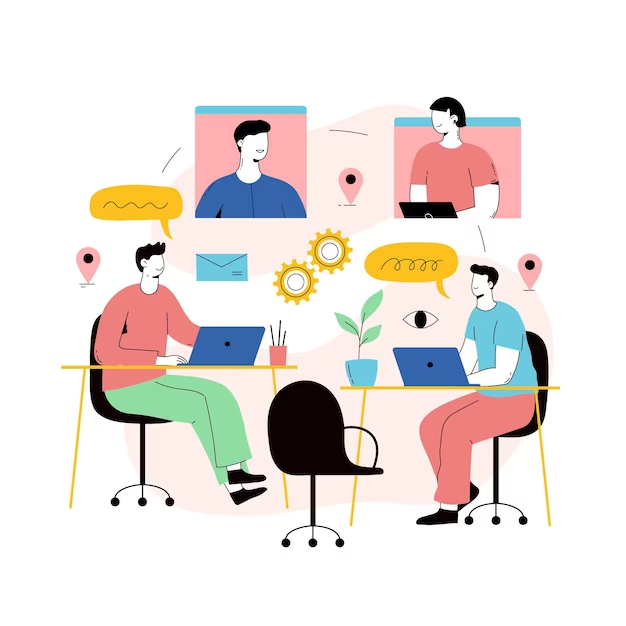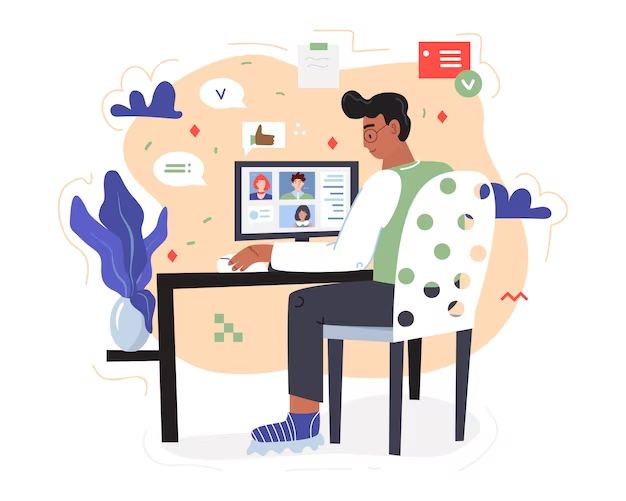
In the wake of the global pandemic, remote work has transformed from a mere exception to the prevalent norm. As businesses navigate this new era and adopt remote setups, the significance of managing remote employees and equipping teams with efficient management tools has surged to unprecedented levels.
This blog delves into a comprehensive exploration of five essential and non-negotiable tech tools. These tools for managing remote employees are meticulously designed to bolster remote team functionality. They can define the trajectory of your team’s accomplishments in this ever-changing work environment. By embracing these technological enablers, businesses can manage remote employees effortlessly and ensure adaptability, enhanced collaboration, and sustainable productivity.
Table of Contents
- Asana: Elevating Task Management
- Google Meet: Seamless Communication
- Google Chat: Unified Communication Hub
- Google Drive: Secure Cloud Collaboration
- Dialpad: Business Communication On-the-Go
Why a Unified Tool Suite Benefits Remote Employee Management?
Top 5 Remote Management Tools
1. Asana: Elevating Task Management
Effective task management stands as the foundational pillar of managing remote employees successfully. The precise execution of tasks holds immense importance, considering they are the building blocks upon which projects and overall business growth are constructed.
Asana, a versatile and comprehensive task management tool, emerges as a cornerstone. Its dynamic features facilitate seamless collaboration and provide a robust platform to track progress. It ensures teams remain aligned with objectives efficiently. There is also the inclusion of essential attributes such as due dates, subtasks, and interactive Gantt charts.
In task management, Asana faces competition from tools like Trello and Monday.com. Such tools offer dynamic interfaces for successfully organizing and monitoring tasks and managing remote employees.
2. Google Meet: Seamless Communication
The bedrock of effective operations is smooth communication. While Zoom often takes center stage as the default choice, Google Meet has emerged as a potent contender. This is mainly due to its robust stability and browser-based functionality. Google Meet ensures an uninterrupted and glitch-free experience during video meetings. It is complemented by seamless integration with many other Google applications. The incorporation of features such as breakout rooms and interactive voting elevates the level of engagement.
Using distinct devices is a strategic approach for managing remote employees effectively and enhancing productivity. Different devices for meetings and work-related tasks can significantly streamline communication and bolster overall efficiency. Google Meet encounters competition from Microsoft Teams and Cisco Webex as formidable contenders in video conferencing and remote collaboration solutions.
3. Google Chat: Unified Communication Hub
Efficient team communication for managing remote employees necessitates a tool that seamlessly fits into the workflow. Google Chat, integrated within Gmail and the broader Google ecosystem, offers a cohesive solution.
AI-driven features, bots, and add-ons automate messaging and create a dynamic, collaborative environment. Integration with Google Calendar simplifies scheduling, transforming it into a hub for formal discussions and casual interactions that nurture team cohesion.
This integration transforms Google Chat into a hub for structured and formal discussions. The organic flow of casual interactions fortifies team cohesion and camaraderie. In the domain of unified communication, Google Chat faces competition from platforms like Slack and Microsoft Teams. They offer versatile communication channels and integrations for managing remote employees successfully.
4. Google Drive: Secure Cloud Collaboration
Managing remote employees and remote collaboration hinges on a secure platform where you can share files and store them. Many teams have turned to Google Drive for its robust features. Google Workspace, tailored for businesses, grants control over files and folders.
It gives you the power to manage files across various devices effortlessly. With the option of selective synchronization facilitated by Google Drive for desktops, Google Workspace streamlines work processes and establishes an optimal balance between convenience and data security.
Services like Dropbox and Microsoft OneDrive challenge Google Drive’s prowess in secure cloud collaboration. They present users with alternatives for file sharing and storage, each with unique features and capabilities.
5. Dialpad: Business Communication On-the-Go
Navigating professional communication amidst remote work presents a distinct set of challenges. It is where Dialpad emerges as a transformative solution for managing remote employees.
A true game-changer, Dialpad offers a versatile business phone system that seamlessly spans across devices, ensuring uninterrupted call management. It shows inherent mobility and has features such as call forwarding and sophisticated voicemail services. It effectively bridges the gap between traditional office setup conventions and remote work dynamics.
This enhancement resonates in enriched customer interactions and fortifies team connectivity, resulting in a cohesive and communicative remote work environment. Dialpad contends with competitors like RingCentral and 8×8, both offering advanced cloud-based communication systems designed to meet the needs of remote teams.
Why a Unified Tool Suite Benefits Remote Employee Management?
Amid the array of tools available, the value of a unified suite in managing remote employees cannot be overstated. Google Workspace is a comprehensive solution, bundling simplicity in collaboration, communication, and productivity tools. While it may not replicate every feature of traditional office applications, it streamlines workflows and nurtures collaboration, minimizing subscription clutter and expenses.
Conclusion
In a swiftly evolving work landscape, the selection of appropriate tech tools holds the potential to either catalyze or hinder remote team collaboration. This blog has spotlighted five pivotal tools for managing remote employees; each is a path to enhanced remote team performance. Equipping teams with these indispensable tools makes a seamless transition to the remote work environment possible and achievable. Adopting these tools signifies a transformation that empowers businesses to flourish in this new era.
If navigating remote team management’s intricacies seems daunting, look no further than RecruitNInjas. With our expertise in workforce management, we stand ready to offer valuable assistance. RecruitNInjas can help your business optimize remote team dynamics, from finding the right talent to implementing effective strategies. Don’t hesitate – reach out to RecruitNInjas and unlock the full potential of your remote team.
This blog is inspired by the video ‘5 Remote Management Tech Tools I Can’t Live Without’ by ’itGenius 🤓 Biz Tech Experts.’
Nandhini A
Nandhini A, with over 15 years of experience, currently serves as a Relationship Manager at Recruit Ninjas. Her expertise includes driving business process success, leading operations, and team development. She excels in optimizing efficiency and productivity, driving sales, and fostering high levels of customer satisfaction and retention.




 Maximizing Efficiency in E-Recruitment: Tips and Best Practices for Finding Top Talent
Maximizing Efficiency in E-Recruitment: Tips and Best Practices for Finding Top Talent The Essential Tools for Managing and Collaborating with Offshore Development Teams
The Essential Tools for Managing and Collaborating with Offshore Development Teams